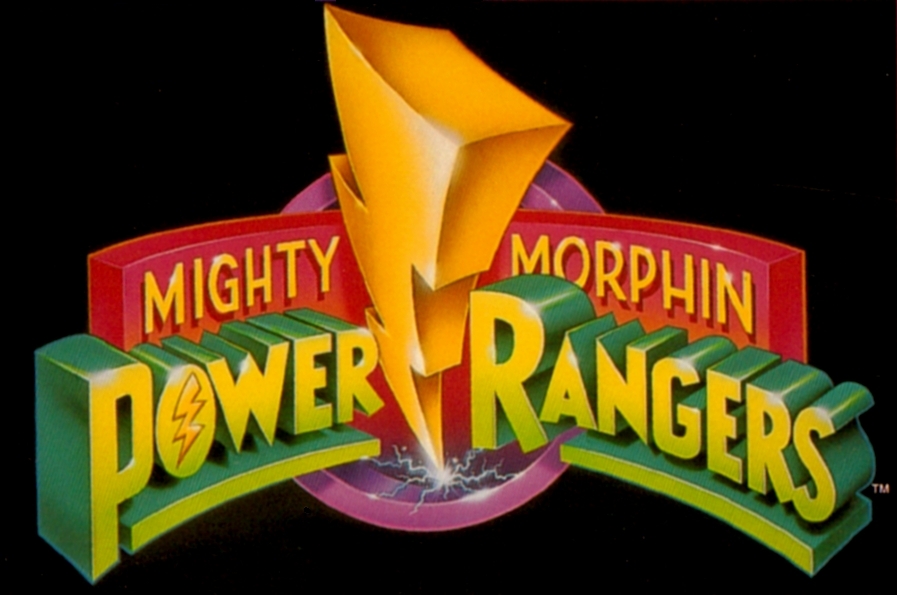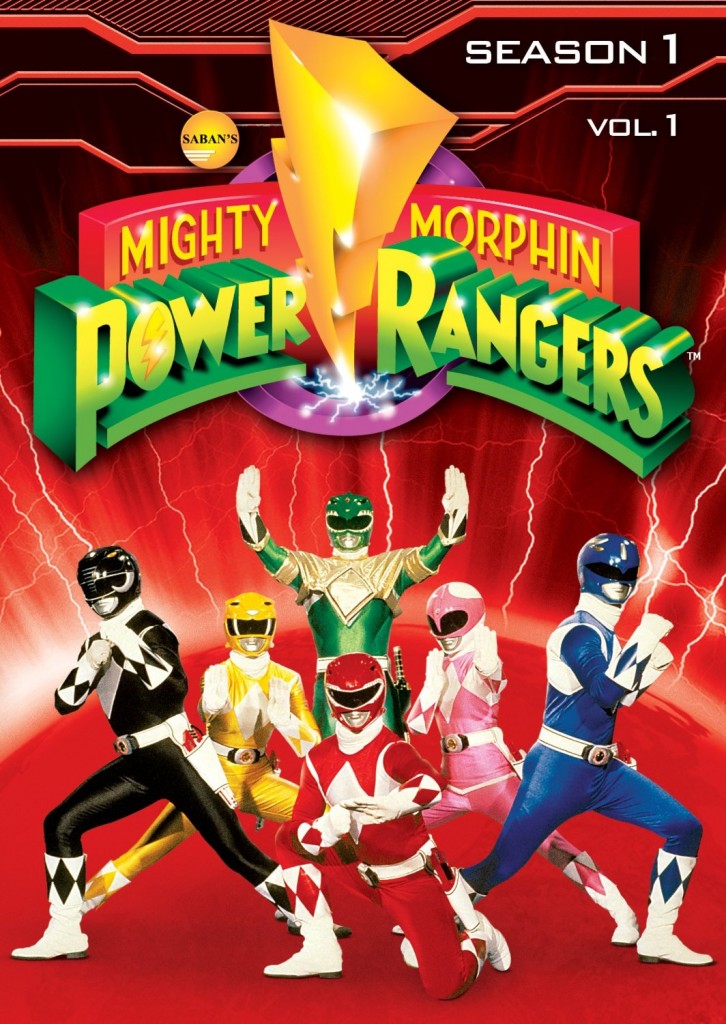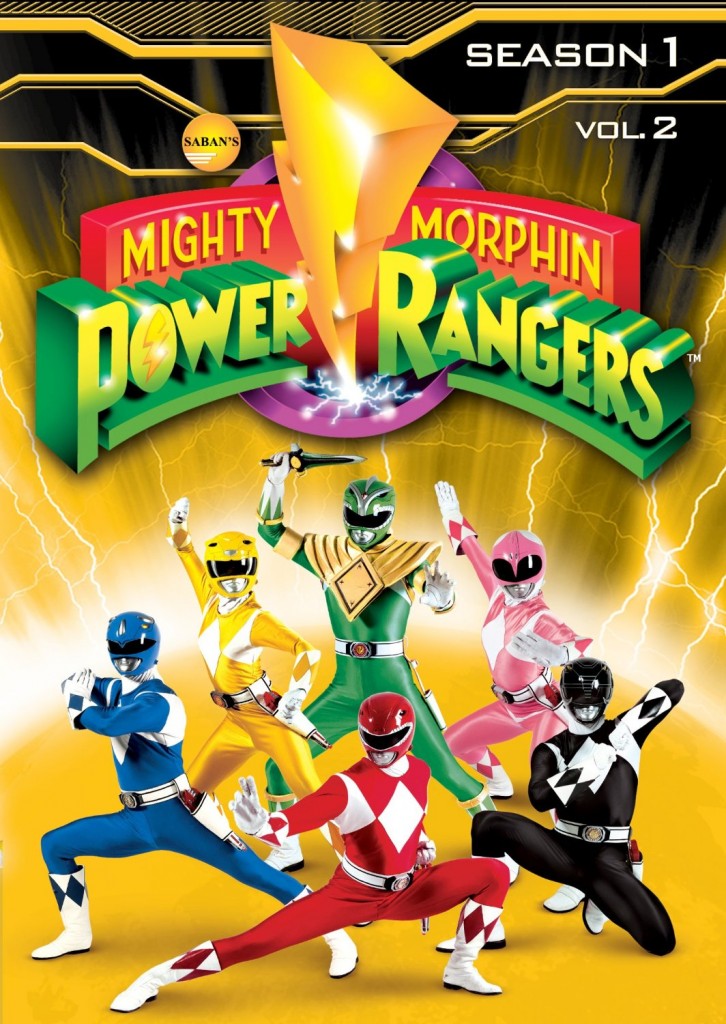Note: This retrospective review will contain spoilers for people who have not watched the show before. Read at your own risk.
In 1993, Mighty Morphin Power Rangers was released and quickly became a favorite of children across America and beyond. The series, adapted from the Japanese series Zyuranger, revolutionized action/adventure shows for kids. Within a few months, it was a cultural phenomenon, with toys flying off store shelves, and new seasons/sequel series coming out nearly every year since. For a few years in the early/mid 90s, Power Rangers was THE show for kids.
But how does it fare revisiting it as an adult, two decades later?
Let’s take a look back at the first season of the show; the one that launched the Power Rangers brand.
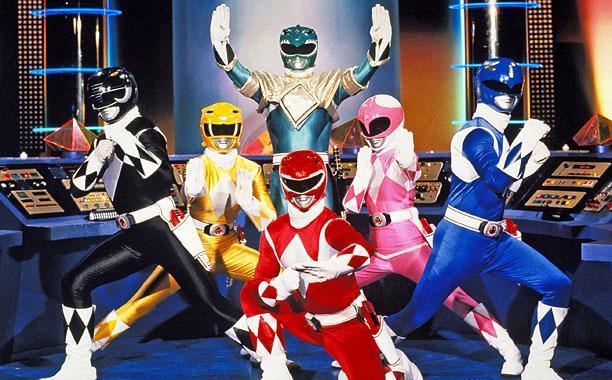
In case you never saw it, the story behind the first season of Mighty Morphin Power Rangers goes something like this. During a space expedition to a mysterious planet, astronauts stumble across a mysterious container and attempt to open it, setting free the villainous Rita Repulsa, who had been sealed inside thousands of years ago, along with her henchmen. Rita sets her sights on the Earth, but interdimensional being Zordon and his robotic assistant Alpha 5, who battled Rita long ago, recruit five teenagers from nearby Angel Grove to their secret Command Center, entrusting them with the Power Coins that allow them to transform into the Mighty Morphin Power Rangers, utilizing the power of prehistoric animals, bringing powerful weapons and pilotable machines called Zords, which they can use to do battle with Rita and her warriors.
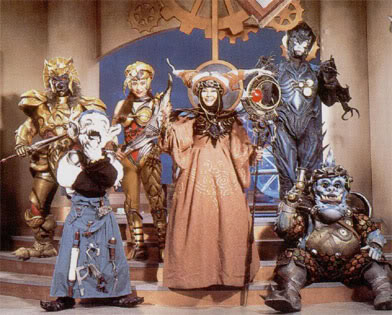
The first Power Ranger team, who this season focuses on, consists of:
-Jason, the Red Ranger: The leader of the team and a skilled martial artist. His weapon is the Power Sword, and he controls the Tyrannosaurus Dinozord.
-Trini, the Yellow Ranger: A talented young woman who is both a skilled fighter and academically talented. Her weapon is the Power Daggers, and she controls the Saber Tooth Tiger Dinozord.
-Zach, the Black Ranger: A music lover and skilled dancer who has invented his own style of martial arts, combining karate and dance moves. His weapon is the Power Axe, and he controls the Mastodon Dinozord.
-Billy, the Blue Ranger: Billy is socially awkward and lacks the confidence and martial arts skills of his fellow Rangers, but is very intelligent and invents many pieces of technology to help the team. His weapon is the Power Lance, and he controls the Triceratops Dinozord.
-Kimberly, the Pink Ranger: A talented and agile gymnast, she is a vital member of the team. Her weapon is the Power Bow, and she controls the Pterodactyl Dinozord.
-Tommy, the Green Ranger. Initially a promising young martial artist, he is captured and brainwashed by Rita, forced to do her bidding. But the spell is eventually broken and he becomes a valuable member of the team, fighting against evil. His weapon is the Dragon Dagger, and he controls the Dragonzord.
Other characters on the show include school bullies Bulk and Skull, who bring much of the show’s comic relief, as well as high school teacher Ms. Appleby and principal Mr. Caplan. Another semi-major character that would last into later seasons of the show is Ernie, who owns and operates the Angel Grove Juice Bar and Youth Center, which serves as a primary hangout and workout spot for the Rangers when they are away from the battlefield.
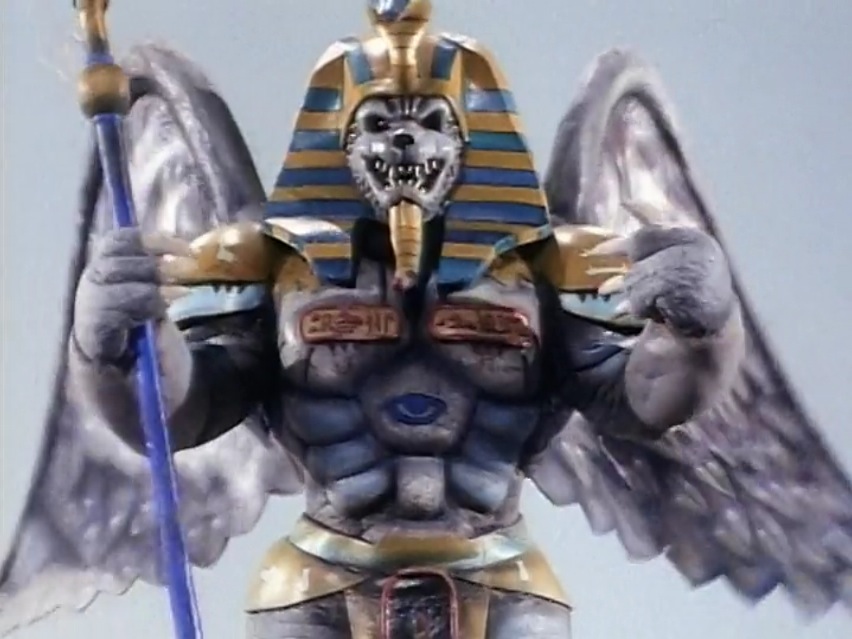
The series starts with Rita being freed from her prison on a distant planet, at which time she goes with her henchmen, including the warrior Goldar, monster creator Finster, and the bumbling Squatt and Baboo, to her moon palace, as she sets her sights on Earth. Fortunately, Zordon and Alpha 5 get the jump on Rita and are aware of her plan, prompting them to teleport the five teens that will become the Rangers to their Command Center. Naturally, the teens do not believe Zordon’s story and leave him and Alpha behind, but come to embrace the power when they are forced to morph into the Power Rangers and fight off Rita’s Putty Patrollers, and do battle with Goldar. From that point on, the quintet vows to do their part to protect the world from Rita and her monsters.
Over time, the Rangers battle against new monsters created by Rita, using their weapons and Zords to win the battles, having to utilize their minds, martial arts skills, and new technology. The team is doing well until Rita brainwashes Tommy and turns him into the evil Green Ranger, who proves to be the most difficult opponent the team has ever faced. Furthermore, Rita is joined by her old ally Scorpina, who proves to be another menace the team must deal with. Eventually, the team manages to defeat the Green Ranger and break Rita’s spell over him, and he joins the team as the sixth Power Ranger. The Ranger’s Zords can now combine with the Green Ranger’s Dragonzord, forming bigger and even more powerful machines.
With Tommy a member of the team, the Rangers continue to battle Rita with continued success. The team also gains use of Titanus, the Carrier Zord, which combines with the existing Zords to form the Ultrazord, the most powerful machine in the team’s ranks. Rita hatches a plot to steal back Tommy’s power’s and control of the Dragonzord with the Green Candle, which will reclaim said powers to Rita’s side when it has finished burning. Despite the team’s best efforts to stop this plot, the Green Candle burns out and Tommy loses his powers as a Ranger. However, the team is able to prevent Rita from gaining the powers, by transferring them to Jason, who gains the Green Ranger’s Dragon Shield and Dragon Dagger, and by that extent, control of the Dragonzord. Tommy returns to “normal” life while the team soldiers on against Rita.
The Rangers continue to face Rita, but eventually come to a difficult bind when they are forced to turn their Power Coins over to Goldar in exchange for the safety of their parents, who Rita has captured. Goldar double crosses the team, taking the coins back to Rita’s palace. However, Jason kept the Green Ranger Power Coin. Tommy is teleported to the Command Center, where Zordon gives Tommy some of his own energy so that he has able to, at least temporarily, return as the Green Ranger.
The Power Coins are reclaimed and the five Power Rangers return to do battle with Rita. Unfortunately, due to the fragile nature of the Green Ranger’s power, he must conserve his energy or risk losing it permanently. Further battles against Rita and her monsters continue, which segue into the second season of the show… but that is a story for another day.
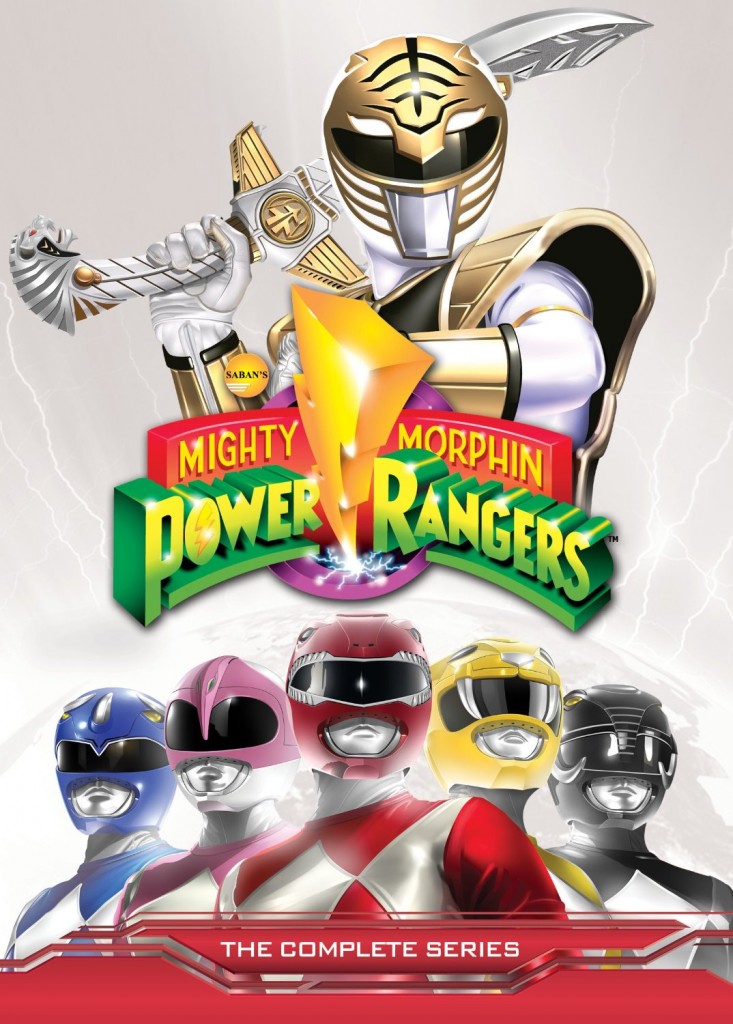
So, two decades later, and as an adult, how does the first season of Mighty Morphin Power Rangers hold up? Probably the simplest answer would be “it is what it is.” It was a lot of fun revisiting the show and some old childhood memories; it is not hard to see why, when I was a kid, this was my favorite show on television. That said, there are many aspects to the show that have not held up as well as I was hoping for Many of the flaws are pretty massive and gaping; these are painfully obvious to an adult watching the show again for the first time in years. Fans who grew up with the series will have fun watching it again, but those who missed it the first time around may be left wondering what all the fuss is/was about. All things considered, though, this IS the first and best season of the show; no subsequent season or series would be as entertaining as this, even if later seasons/series would try different things and more adventurous/daring plots.
So, what are the best and worst aspects of the show? I could go on a rant for hours on end here, but I am going to limit it to a handful of my favorite elements (in no particular order), and five things that did not hold up so well.
The Bad:
The show is repetitive. REALLY repetitive.
Probably a good three quarters of the episodes in the season follow the same basic formula, of Rita making a monster, which the Rangers, despite some initial difficulties and obstacles, tend to beat. We then get the same footage of Rita chewing out her henchmen and being bossy after failing, and all of them blaming each other. The constantly recycled and reused Zyuranger footage is painfully obvious; how many times do we have to see the Rangers fighting Goldar and Scorpina (utilizing the same footage nearly every time), when we know the status quo is never going to change?
Very little depth or character development.
Granted, this is a show for kids, but there are action/adventure shows for kids that do a far better job of seeing their characters evolve and develop over time. We may learn a thing or two about the characters, or see them associating with some other persons here and there, but the show is mostly episodic with these elements solved by episode’s end and then never mentioned again. With a few exceptions, the episodes do little to advance the plot. It would have been nice to learn more about the Rangers and their everyday activities outside of the high school and juice bar/youth center, including their families and home lives.
Overly sanitized and kid-friendly.
Again, this is to be expected with a show for kids, but there are other more daring shows out there focused at a kid-oriented audience. No one ever dies except the “Monsters of the Day.” (There are a few exceptions in later seasons/series, but that is yet another story for another day.) This prevents the show from having the dramatic edge it needs to really hold up all these years later. We know the Rangers are going to survive every mission. We know the main bad guys are never going to die. We know nothing to serious is going to happen, even if the world is in peril.
What exactly is Rita’s objective? Why did she not kill or expose the Power Rangers?
Is Rita trying to CONQUER the Earth, or DESTROY the Earth? She says both on a regular basis and jumps back and forth between the two, with no real rhyme or reason. Which is she actually trying to do? Furthermore, she knows the Rangers’ secret identities and can see anything, anywhere on Earth, at any time. Why, therefore, does she not have Finster whip up multiple monsters and send them to Earth to kill the Rangers in their sleep? If nothing else, why doesn’t she just reveal their identities to the public and give them that much more trouble?
Unexplained plot holes and inconsistent writing.
Zordon seems to have an encyclopedic knowledge of every single monster that Rita makes, despite having never seen them before. The Rangers reappear after they morph in totally different locations (no doubt due to the efforts to combine American footage with the Japanese Zyuranger stock footage; the famous Tokyo Tower can even be seen in some episodes). School Principal Mr. Caplan goes from being an uptight jerk in some episodes to a good-natured man who loves a joke in others (he is enraged at a food fight in one episode, yet laughs and becomes part of one in another?) Jason has never piloted the Megazord prior to the events of the first episode, yet instantly knows about the Power Sword weapon?
Terrible, wooden acting and predictable subplots.
This applies more to the one-off “child” characters who appear and are friends/relatives as one of the Rangers (the core cast acts fine for the most part). The acting of said characters is typically horrible and flat, and they usually have a generic arc about struggling with something or lacking confidence. In many cases they are trying to get into a program or make a team. Of course, every single time they end up making it. Granted, things like this are atypical of shows of the era, so I cannot hold this solely against the Power Rangers franchise.
The season is about 15 episodes too long.
This one speaks for itself. Particularly after about the first two thirds of the season, a lot of it feels like “padding” and rather unimaginative by comparison. A shorter season with more episodes that actually advanced the plot would have worked better.
Obvious limitations due to the source material.
I noticed this one far more as an adult. Apparently Zyuranger did not have a ton of Green Ranger footage, because when he joins the team, there is always a plot device that separates him from the other Rangers, and he ends up having to show up at the last minute to save the day with the Dragonzord (footage of him in hand-to-hand battles during his initial tenure with the team is rare, likely for this reason).
The Good:
The characters actually have distinctive personalities.
This is not something like the Ninja Turtles where we have more-or-less interchangeable characters that are only set apart by a voice or a costume. While the characters do not get developed too well, each one is distinctly their own character; more sets them apart than their weaponry or the color of their costume. We have confident martial artists, a nerd that lacks confidence, a fun loving dance fan, and plenty of others. This coupled with the fact that the characters are actually likable worked wonders for the show, and is no doubt one of the things that pulled in a whole generation of boys and girls as fans. Even the “bad guys” grow on you over time.
The battles are a ton of fun to watch.
For most American kids who discovered this show when it came out, it was their first time seeing a Super Sentai show, which was unheard of in the States at the time despite having been a thing in Japan for roughly two decades prior. The Rangers are colorful characters (in multiple senses of the words) with cool weapons and massive Zords that can fuse together into even more powerful machines. When these massive machines do battle with monsters that have grown to the size of skyscrapers, there is plenty of entertainment to be had. Okay, I admit it – when I was rewatching these episodes I was rooting for the Rangers, and singing along with the infectious theme music.
Bulk and Skull.
This one speaks for itself. These two bullies are one of the most comical and entertaining things about the show. Hell, they even get their own theme music! Their encounters are idiotic and heavy on the slapstick, but even all these years later, seeing the two of them getting their just desserts is classic. You are bound to get more laughs from these guys than anything else on the show.
Some surprisingly good dramatic moments.
They are few and far between, but the show does succeed in this regard on a few occasions. It is interesting to see the team as “non-believers” in the first episode, eventually won over when they experience the powers in action. The “Green with Evil” story arc, the “Green Candle” arc, and the “Return of an Old Friend” arc (coincidentally, all being plots that revolve around the Green Ranger) manage to convey some excellent moments by these means. When Tommy returns to the team and has to deal with the risk of diminishing powers, we actually care and fear for the fact that a member of the team may be going permanently.
And, while we are on the subject, here are a few interesting facts about the series you might not have known:
The Green Ranger was not supposed to come back.
After the Green Ranger lost his powers he was supposed to be gone for good. The story arc about him regaining his powers to a limited extent was added due to an outcry from fans who wanted him to return. Jason David Frank, who portrayed Tommy/Green Ranger, was supposed to go over to another Saban series, which eventually became VR Troopers. It is interesting to note that the character’s Zyuranger counterpart actually dies, and does not return.
The show was supposed to end after the “Doomsday” two-parter.
This is why Zordon gives a lengthy speech at the end of the second part regarding the Rangers deciding whether or not to stay part of the team. In fact, an alternate ending was filmed with the Rangers resealing Rita in the space dumpster, thus ending the series.
Japan had to produce new Zyuranger footage exclusively for American use.
When the show was renewed and kept on going, the Zyuranger footage had been exhausted, so the production team used the Zyuranger actors and crew to create all new footage in Japan, which was then used in the American show. Many conventions that were exclusive to the American show (Blue Ranger being the smart one, Red and Green Rangers being close friends and allies, etc.) were put to use in this footage. The footage created here is commonly called “Zyu2” by fans.
Bulk and Skull were on the show longer than anyone that played a Power Ranger here.
You read that right. By the end of Season Two, half of the original Power Ranger team is gone. By the end of Season Three and the beginning of Power Rangers Zeo, everyone is gone except for Tommy and Billy. Yet despite so many core cast members coming and going, Bulk and Skull were there throughout it all, even into post-Zeo series!
The show was controversial for its level of violence.
Yes, this sounds laughable by today’s standards, but the show was accused of being responsible for kids inflicting martial arts-style violence on others. While parents were quick to blast the show for things like this, the show constantly preached that martial arts was for self-defense only and not meant to harm others.
The Yellow Ranger is a male in Zyuranger.
This is why the Yellow Ranger’s uniform has no skirt, while the Pink Ranger’s does (Zyuranger and Power Rangers both have female Pink Rangers).
Bryan Cranston was a voice actor on the show.
Cranston would rise to fame with his roles on Malcolm in the Middle and Breaking Bad, but he appeared in Power Rangers’ first season, voicing the Twin Man and Snizzard villains of the day. In fact, Billy the Blue Ranger’s last name is Cranston, named in honor of Bryan!
And there you have it. The first (and best!) season of Mighty Morphin Power Rangers revisited. The series is now available in a number of sets from Shout! Factory, but I will most likely cover the sets themselves and associated bonus features in a later review. So, should you go back and re-experience this childhood favorite that you have such fond memories of? If you liked the show growing up, watching it again will result in hours upon hours of campy fun and conjure up images from your childhood. If you were not a fan to begin with, it is not likely that you will become one, though. That said, as someone who falls into the former camp, I can give the first season of Mighty Morphin Power Rangers a modest recommendation!

